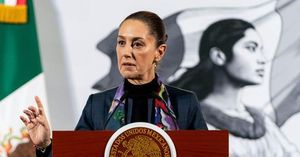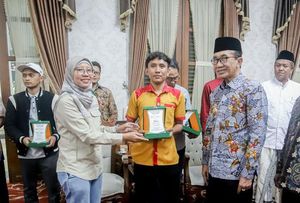On February 20, 2025, the significance of the Saxon dialects within the German language came under the spotlight, following remarks from the dialectologist Peter Porsch during an interview with MDR GESCHICHTE. Despite commonly being dismissed as inaccurate German, the Saxon dialect has historical roots and contributions to modern Standard German, which are often overlooked.
Contrary to the perception of being 'incorrect,' many of the Saxon dialects were fundamental during the evolution of what we recognize as today's High German. Martin Luther famously utilized these dialects for his German Bible translation, creating what Porsch calls the Meißner Kanzleisprache, which united various German dialects through clear pronunciation and accessible grammar.
Porsch noted how Saxony's dialects have distinct origins, beginning around the year 900, when settlers migrated across the Elbe, melding their varied dialects to communicate effectively. This resulted not only in the development of regional dialects but also paved the way for the emergence of what would become Standard German.
Interestingly, even esteemed literary figures like Goethe were drawn to the Saxon dialect, believing it to reflect the highest form of German. While he once remarked, “Mein Leipzig lob' ich mir! Es ist ein klein Paris und bildet seine Leute,” those sentiments resonate with the sense of pride reflected by many who identify with their own regional dialects.
Dialectologism reveals the nuanced distinctions and richness inherent to dialects—particularly revealed through locally specific terms and phrases. For example, the Erzgebirgisch dialect includes the term “addeln,” referring to aimless fiddling or trivial tasks, succinctly capturing meaning where Standard German may require several words. Saxon dialects often boast clever expressions unique to the region, enriching Germany's vernacular lexicon.
Despite their richness, Saxon dialects frequently rank among the least liked dialects within Germany. Porsch attributes this negative reputation partly to historical associations with figures like the former DDR leader Walter Ulbricht, whose awkward phrases perpetuated stereotypes. He articulated, “Die Elite der DDR sprach sächsisch,” implying the dialect's earlier perceptions as being tied to political elites of less favorable social views.
Judged through the lens of social status, dialects such as Bavarian or Rhineland variants are celebrated, whereas Saxon endures unfounded stigma. This perception was observed by academics like Porsch, who noted, “Die Sachsen und ihr Sächsisch einer Bewertung unterlägen, die für sie meist wenig schmeichelhaft sei,” underscoring how regional speakers may internalize negative societal standards.
The evolution from traditional dialects to Regiolekte—a term describing mixed forms of dialect and standard language—has also impacted Saxon. Speakers often blend dialectical forms increasing their scope of intelligibility, creating more recognizable variants. Porsch highlighted how words morph over time, noting the shift from "Itze" (now) to "jetze" and how this reflects wider changes at play within the language.
Porsch's insights reveal unexpected challenges for dialects as global and societal pressures drive linguistic uniformity. He reflects, “Dialekte verstecken sich hinter Regiolekten,” indicating how traditional dialects could fade amid the rise of such hybrid forms. The perception of Saxon as outdated or merely the 'incorrect' way of speaking German could lead to its decline if no effort is made to celebrate and preserve its distinct heritage.
Nevertheless, the Saxon dialect maintains its place within the cultural narrative of Germany, serving as both; identity and heritage rooted within the people. The attachment to expressions and local terminology fosters regional pride, encouraging efforts to engage with and sustain dialectal practices. Porsch emphasizes, “Sächsisch ist wie Meißner Porzellan - so was gibt man nicht auf!” highlighting his belief the Saxon dialect deserves continued reverence and preservation as part of Germany's linguistic treasury.
Moving forward, initiatives to celebrate dialects—such as the Ilse-Bähnert-Stiftung’s recognition of the “Sächsische Wort des Jahres”—serve as commendable means of fostering appreciation. The 2024 winner, the word “Hudelei,” exemplifies how even shifted or pronounced terms can become emblematic of Saxon heritage.
Historically regarded as elite language practice, the Saxon dialect has transitioned through varying perceptions of prestige and social acceptance. With thoughtful cultivation and positive representations, it is plausible to envision renewed appreciation as locals reconcile and embrace the duality of their linguistic identity—a long-lost element renewed through social storytelling and shared experiences.
Dialect’s rich interconnectedness especially is underscored when one considers the comment by Goethe, “Jede Provinz liebt ihren Dialect: denn er ist doch eigentlich das Element, in welchem die Seele ihren Athem schöpft.” This statement perfectly encapsulates how regional dialects breathe life and personality infused within the broader German language.



